Contents
| |||||
| Decades: | |||||
|---|---|---|---|---|---|
| See also: | Other events of 1571 History of France • Timeline • Years | ||||
Events from the year 1571 in France .
| |||||
| Decades: | |||||
|---|---|---|---|---|---|
| See also: | Other events of 1571 History of France • Timeline • Years | ||||
Events from the year 1571 in France .

The First Ecumenical Council of the Vatican, commonly known as the First Vatican Council or Vatican I, was the 20th ecumenical council of the Catholic Church, held three centuries after the preceding Council of Trent which was adjourned in 1563. The council was convoked by Pope Pius IX on 29 June 1868, under the rising threat of the Kingdom of Italy encroaching on the Papal States. It opened on 8 December 1869 and was adjourned on 20 September 1870 after the Italian Capture of Rome. Its best-known decision is its definition of papal infallibility.

Pope Boniface IX was head of the Catholic Church from 2 November 1389 to his death, in October 1404. He was the second Roman pope during the Western Schism. In this time, the Avignon claimants, Clement VII and Benedict XIII, maintained the Roman Curia in Avignon, under the protection of the French monarchy. He is the last pope to date to take on the pontifical name "Boniface".

Pope Pius IV, born Giovanni Angelo Medici, was head of the Catholic Church and ruler of the Papal States from 25 December 1559 to his death, in December 1565. Born in Milan, his family considered itself a branch of the House of Medici and used the same coat of arms. Although modern historians have found no proof of this connection, the Medici of Florence recognised the claims of the Medici of Milan in the early 16th century.
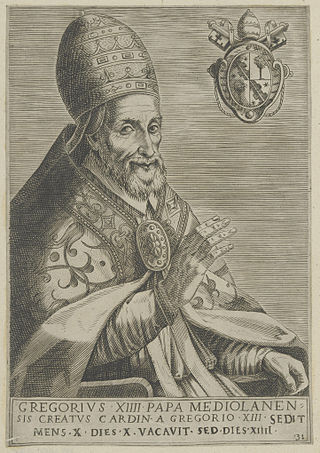
Pope Gregory XIV, born Niccolò Sfondrato or Sfondrati, was head of the Catholic Church and ruler of the Papal States from 5 December 1590 to his death, in October 1591.
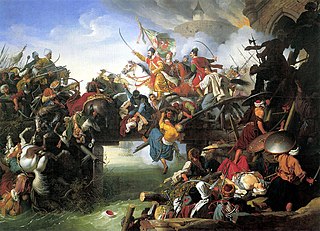
Year 1566 (MDLXVI) was a common year starting on Tuesday of the Julian calendar.

Year 1560 (MDLX) was a leap year starting on Monday of the Julian calendar.
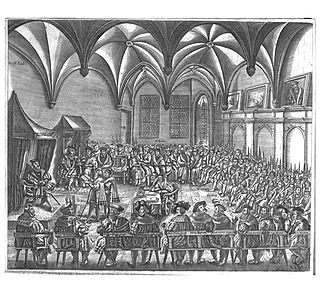
Year 1555 (MDLV) was a common year starting on Tuesday of the Julian calendar.

1591 (MDXCI) was a common year starting on Tuesday of the Gregorian calendar and a common year starting on Friday of the Julian calendar, the 1591st year of the Common Era (CE) and Anno Domini (AD) designations, the 591st year of the 2nd millennium, the 91st year of the 16th century, and the 2nd year of the 1590s decade. As of the start of 1591, the Gregorian calendar was 10 days ahead of the Julian calendar, which remained in localized use until 1923.

Year 1515 (MDXV) was a common year starting on Monday of the Julian calendar.
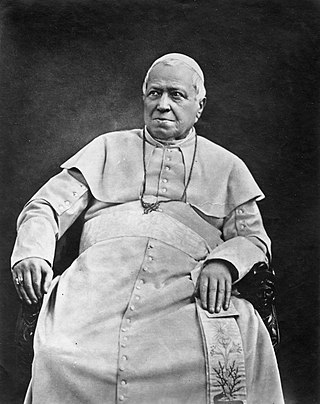
Pope Pius IX was head of the Catholic Church from 1846 to 1878. His reign of nearly 32 years is the longest verified of any pope in history. He was notable for convoking the First Vatican Council in 1868 and for permanently losing control of the Papal States in 1870 to the Kingdom of Italy. Thereafter, he refused to leave Vatican City, declaring himself a "prisoner in the Vatican".
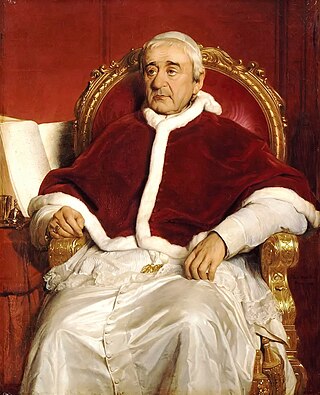
Pope Gregory XVI was head of the Catholic Church and ruler of the Papal States from 2 February 1831 to his death in June 1846. He had adopted the name Mauro upon entering the religious order of the Camaldolese.

Charles de Lorraine, Duke of Chevreuse, was a French Cardinal, a member of the powerful House of Guise. He was known at first as the Cardinal of Guise, and then as the second Cardinal of Lorraine, after the death of his uncle, Jean, Cardinal of Lorraine (1550). He was the protector of François Rabelais and Pierre de Ronsard and founded Reims University. He is sometimes known as the Cardinal de Lorraine.

Pedro Martínez de Luna y Pérez de Gotor, known as el Papa Luna(lit. 'the Moon Pope') or Pope Luna, was an Aragonese nobleman who was christened antipope Benedict XIII during the Western Schism.

Georges d'Armagnac was a French humanist, patron of arts, cardinal and diplomat deeply embroiled in the Italian Wars and in the French Wars of Religion.
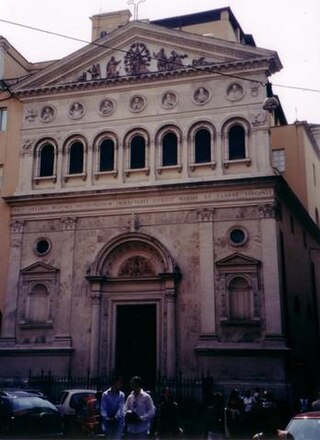
The Pontifical French Seminary is a Roman College dedicated to training French-speaking Roman Catholic priests.

The Archbishop of Dublin is an archiepiscopal title which takes its name from Dublin, Ireland. Since the Reformation, there have been parallel apostolic successions to the title: one in the Catholic Church and the other in the Church of Ireland. The archbishop of each denomination also holds the title of Primate of Ireland.

Philibert Babou de la Bourdaisière was a Roman Catholic bishop and cardinal.
Events from the year 1519 in France
Events from the year 1566 in France.
Events from the year 1561 in France